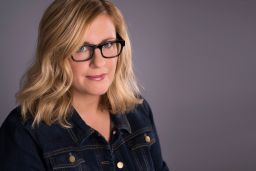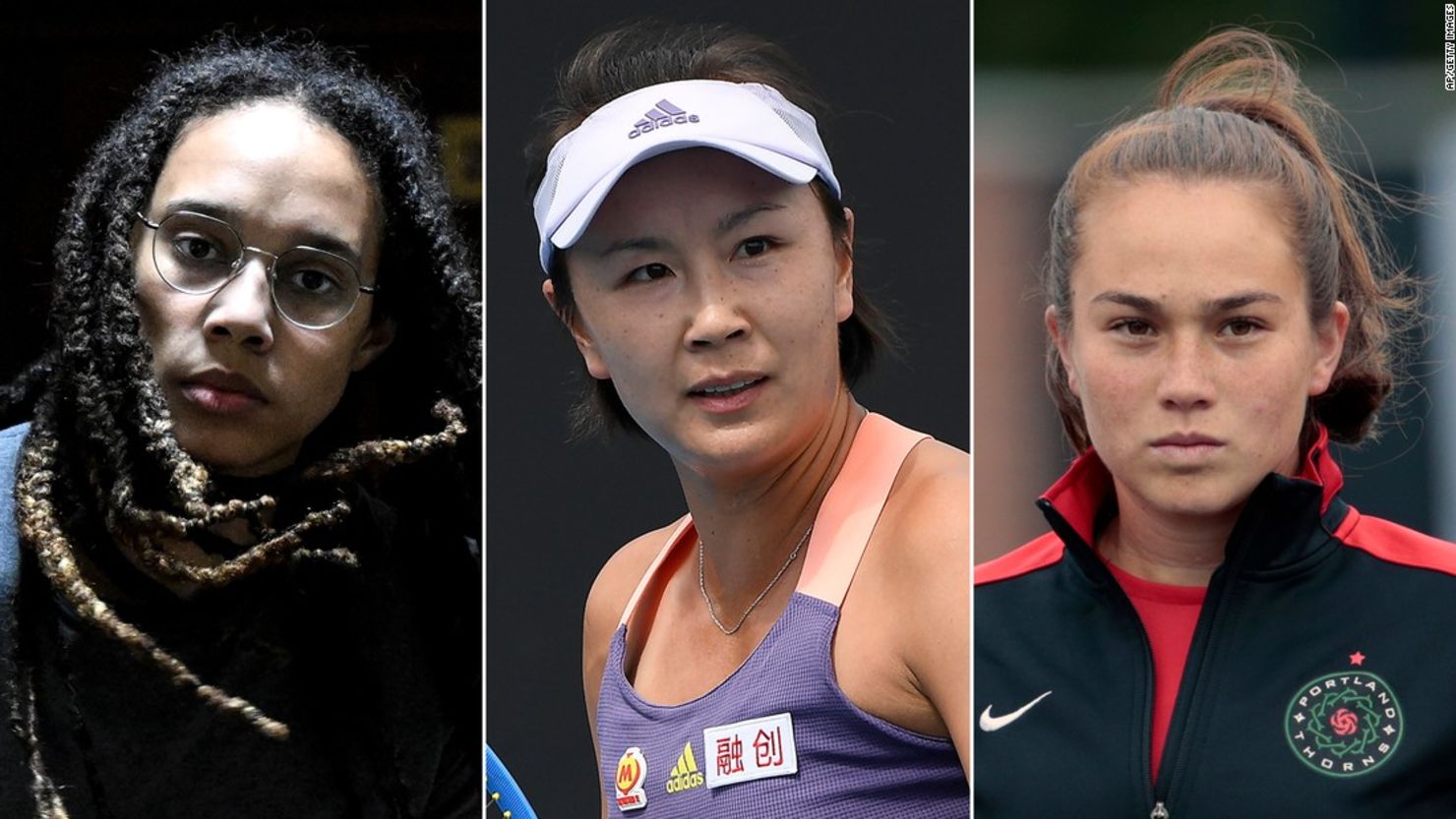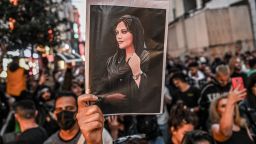Editor’s Note: Amy Bass (@bassab1) is professor of sport studies at Manhattanville College and the author of “One Goal: A Coach, a Team, and the Game That Brought a Divided Town Together” and “Not the Triumph but the Struggle: The 1968 Olympics and the Making of the Black Athlete,” among other titles. The views expressed here are solely hers. Read more opinion on CNN.
News last week that a Russian court upheld Phoenix Mercury star Brittney Griner’s sentence of nine years in a penal colony for drug smuggling surprised no one. While Jake Sullivan, President Joe Biden’s national security adviser, deemed the appeal “another sham judicial proceeding” and asked that Griner “be released immediately,” the outcome continues to hang in the air as her legal team considers next steps.

Griner’s plight raises tough questions regarding women in sports. Would public reaction to her situation or her fate itself be different, for example, if she were an NBA, not WNBA, star? Does anyone challenge the reality that Griner never would have been in Russia, where she receives a star’s salary to play for UMMC Yekaterinburg, in the first place apart from her gender and the pay gap that goes along with it?
Griner’s continued Russian imprisonment sits among a barrage of headlines regarding dangerous situations for female athletes. While circumstances may be vastly different, one thing remains the same: in different ways, in different places, female athletes are not safe. And if sports cannot protect the women who play, how can we ever expect society at large to do it?
Despite foggy detail and little evidence, for example, when stories emerged that Iranian rock climber Elnaz Rekabi had gone missing after competing in the Asian Continental Climbing Championships in Seoul without wearing a hijab, many believed them, with much speculation about her passport, her cell phone and her whereabouts.
The climber posted to Instagram that she had made a mistake in a rush to compete and didn’t mean to climb without her hijab. After she returned home several days later, her head covered by both a baseball hat and hood, cheering crowds greeted her and the team.
But her fate remains a question mark amongst the surge of anti-government protests – “Woman, Life, Freedom” – led by women and girls (and increasingly a number of men) in the wake of the death of 22-year-old Mahsa Amini, who had been arrested by the Iran’s morality police for violation of hijab protocol. Some say as of last week that Rekabi is under house arrest; others contend that authorities forced her apology, noting subtle changes in her reasons for climbing without her hijab.
Rekabi’s story and its many unknowns are eerily familiar. Just last year, Chinese tennis star Peng Shuai disappeared from public view after she posted sexual misconduct allegations against former Vice Premier Zhang Gaoli to China’s Twitter-like platform, Weibo.
Peng then denied making those allegations, once in an interview conducted with her in the presence of Wang Kan, the Chinese Olympic Committee chief of staff. After pressure from the United Nations Human Rights office and an embargo by the Women’s Tennis Association, she re-emerged, making an appearance at an event at the Beijing Winter Olympic Games alongside IOC President Thomas Bach.
Reactions to Rekabi and Peng demonstrate how we – global society – are so quick to understand how women, especially those who live under oppressive regimes that threaten their lives and liberties on a daily basis – are not safe. Even in situations where they eventually appear to be safe for, well, appearance’s sake, many of us remain unsure. Why? Because we have reason to be wary.
We see evidence time and again that instead of looking to dismantle misogynist systems, society, far too often, asks women to bear the burden of responsibility for the violence that falls upon them. That sends a chilling message: You know this world isn’t safe, and you didn’t do everything you could to protect yourself.
The danger, of course, does not merely lie with the individual athlete, but can be found in the systems that organize and govern sport as well. Last year, reporting on the National Women’s Soccer League in The Athletic by Meg Linehan alongside the brave testimonials of players Mana Shim and Sinead Farrelly led to the termination of Portland Thorns’ coach Paul Riley and the resignation of NWSL commissioner Lisa Baird.
But those consequences were not enough to undo the abuses revealed in devastating detail by the recently released 173-page Yates Report on the NWSL, a document commissioned by US Soccer in the wake of Riley’s firing and completed by former acting attorney general of the United States Sally Yates on behalf of law firm King & Spalding.
From its very first pages – the Table of Contents is even difficult to stomach with headers that include “systemic abuse,” “there was no way out,” “emotional manipulation,” and “yet another monster” – the report, based on over 200 interviews, demonstrates that there has been little, if any, accountability or workplace protection for professional women’s soccer players.
One of the critical conclusions of the report is that regardless of what was exposed, when, and by whom, what was needed to happen to make it stop, and (even better) guarantee it never happened again, did not happen. Instead of creating even the most basic workplace protections, a “culture of protecting ‘open secrets’” endured, a culture similar to the one uncovered in US gymnastics regarding the predatory – and criminal – behavior of Dr. Larry Nassar, who now serves a life sentence. His longstanding lack of accountability was laid bare in congressional testimony of athletes that included stars Simone Biles and Aly Raisman.
These stories – as wide-ranging and different as they are – speak to a deeper point. Sport is one of the most controlled arenas in society. There are rules, officials, managers, owners, organizing bodies, coaches, and fans all watching, all observing, every move an athlete makes.
There are helmets and pads for protection; drug tests to ensure fair play. And there are consequences for dangerous behaviors – heightened punishments for fouls deemed flagrant in the form of free throws, penalty kicks and power plays. A slide tackle in soccer with cleats up? Here’s a red card, don’t do it again. Throw an elbow into someone’s face on the basketball court? Take a seat.
In the United States, Title IX, which just observed its 50th anniversary, tried to legislate gender equality in education and, in doing so, in sports. But while enormous strides have occurred, the seemingly endless examples indicate that the rules of the game, however fair and just they might seem, do not protect these athletes. “We know sports is a hostile space for women, generally,” journalist Jessica Luther, author of “Unsportsmanlike Conduct: College Football and the Politics of Rape,” told me. “That their very existence within sports is always political because sports, in most ways, was not set up to include them.”
The lack of accountability is well known to women but needs to take up more space, prompt more action, in society writ large. It is part of why so many of us cannot look away from what might lie ahead for an Iranian rock climber, a US basketball star, a professional soccer player, and so many others. If these elite athletes – the owners of these bodies who fly and soar, slam and hit, climb and jump, who work in a world filled with rules and judges and spectators – are not safe, then what can the rest of us mere mortals expect?
We can and should expect change, a revolution that leads to safe space for not just female athletes, but all women. As the Portland Thorns beat the Kansas City Current for its historic third NWSL title on Saturday, fans at Audi Field held signs that read “Support the Players,” a mantra that applies both on and off the field.
Shim, for one, who has already done so much in this effort, says she is up to the challenge. “For far too long, leaders across the soccer ecosystem – including at US Soccer – have not taken responsibility for protecting players,” she stated when she announced her new position as chair of the newly formed Participant Safety Taskforce at US Soccer. “But I believe in the capacity for change….We need to find the root causes of our sport’s systemic failures and take action at every level – from the youth game to the professional game.”






